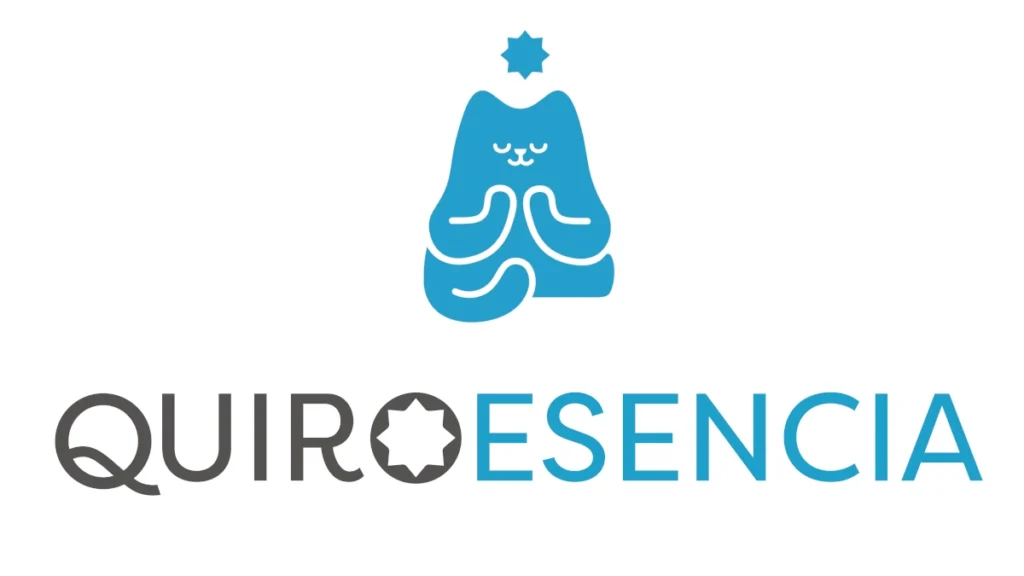What is aromatherapy and how does it connect with our emotions?
There is something deeply human about stopping, closing your eyes, and breathing with intention. When you add the evocative power of a natural scent to that gesture, experience can become transformativeThus begins the journey of aromatherapy, an ancient practice that has survived the test of time because it connects directly with our deepest emotions.
Aromatherapy uses essential oils—concentrated extracts of flowers, leaves, bark, fruits, and resins—to promote physical, mental, and emotional well-being. Each oil has unique properties: some calm, others stimulate, and some balance. These aromas are captured by the sense of smell and, bypassing the rational filter, reach directly the limbic system, the emotional core of the brain. There they influence our mood, memory, and instinctive responses.
When we smell lavender, for example, the body can relax even before we know why. It bridges the gap between the physical and the invisible, between what we feel and what we can't verbalize. That's why aromatherapy doesn't just "smell good": it has a direct and powerful impact on how we feel.
Since ancient times, civilizations such as the Egyptian, Chinese, and Hindu have known the power of aroma. They used it to heal, purify spaces, induce visions, and accompany sacred rituals. Today, this ancient wisdom combines with modern research to demonstrate how essential oils can be allies in processes of emotional healing, self-regulation, and meditation.
2. Meditation as an anchor: presence, body and mind
Meditation is an ancient tool for cultivating mindfulness, calming the mind, and reconnecting with our essence. Although there are many forms of meditation, they all share the same principle: being fully present with what is happening inside and outside, without judgment or rejection.
When we sit down to meditate—whether in silence, with conscious breathing, with a mantra, or guided by a voice—something very simple and profound happens: we come off autopilot. The mind, which usually moves between the past and the future, becomes anchored in the now. And from that present, we can more clearly observe our thoughts, emotions, and bodily sensations.
The benefits of meditation are widely documented: it reduces stress, improves concentration, regulates emotions, improves sleep, and strengthens resilience. But beyond its visible effects, meditation is a way to remember who we are when everything else external stops.
In my experience, meditation is a daily refuge. A space where I can return to myself, listen without judgment, feel without haste. When accompanied by aroma, that inner journey becomes even deeper and revealing.
Why the combination of aromatherapy and meditation is so effective
The true power of this practice emerges when aromatherapy and meditation are combined. Why? Because aroma acts as a kind of "sensory portal" that anchors us in the present.
When we use essential oils during meditation, the aroma gently but firmly guides our attention. It also activates brain areas related to calm, pleasure, and introspection. It's a multisensory experience that transforms an ordinary meditation into a sacred and deeply therapeutic ritual.
The union of aroma and consciousness isn't just aesthetic or pleasurable: it's a way of accompanying internal processes through the body, heart, and senses. In my sessions, I've seen how the right aroma can be the key to releasing stagnant emotions, anchoring a powerful intention, or simply allowing the body to deeply relax.
Smell is the most direct sensory pathway to the emotional brain. Unlike the rest of the senses, it bypasses the rational filter. That's why its effect is so immediate and powerful. When we meditate with a scent, it becomes a kind of invisible thread that accompanies us, sustains us, and gently reminds us to return to the present whenever our mind wanders.
The science of smell: aromas, brain and sensations
Our sense of smell is perhaps the most underrated… and at the same time, one of the most powerful. Unlike sight or hearing, which process information in more rational areas of the brain, smell is directly connected to the limbic system, the center of our emotions, memory, and instincts.
What happens when we inhale an aroma?
When we smell an essential oil, the aromatic molecules travel through the nose and stimulate olfactory receptors. This signal is transmitted directly to areas of the brain such as:
- The amygdala, which manages emotional responses.
- He hippocampus, involved in long-term memory.
- He hypothalamus, which regulates the internal balance of the body.
That's why a simple smell can trigger an old memory in seconds, generate an emotion without us understanding why, or calm the body even before the mind registers it.
In therapeutic terms, this means we can use scent as an emotional anchor. By repeating a meditation practice with the same essential oil, the body associates that fragrance with states of calm, clarity, or connection. Over time, simply inhaling that scent automatically induces that state. It's a form of positive emotional programming.
Selecting essential oils according to your intention
Each essential oil has an emotional "profile." Some help you relax, others energize, and others connect you spiritually. Choosing with intention is key to a transformative experience.
Here is a table that I frequently use to choose my oils:
| Intention | Recommended oils |
|---|---|
| Calm and relaxation | Lavender, chamomile, incense |
| Mental clarity | Rosemary, pine, sandalwood |
| Emotional elevation | Orange, bergamot, ylang ylang |
| Spiritual connection | Myrrh, rose, palo santo |
| Rooting | Vetiver, cedar, ginger |
The most important thing is listen to your intuitionSometimes the oil you're most drawn to is exactly what you need, even if you didn't expect it.
Techniques for combining aromatherapy and meditation (inhalation, topical, ambient)
One of the wonders of aromatherapy is its versatility. You don't need sophisticated equipment to integrate it into your meditation practice. Here, I explain the main ways to use it and how to get the most out of it:
Direct inhalation
Ideal for quick results. Apply a drop of essential oil to the palm of your hands, rub them gently together, and bring them up to your face. Inhale deeply through your nose three times, allowing the aroma to envelop you. This method is perfect just before beginning meditation or as an anchor when you feel your mind wandering.
Environmental dissemination
Using an ultrasonic diffuser is my favorite way to create a complete atmosphere. Simply add 4-6 drops of your chosen oil to the diffuser water and let it run for 10 minutes before starting. The fragrance spreads throughout the space and greets you as you enter, preparing your body and mind for relaxation.
Topical application
Dilute the essential oil in a plant-based oil (almond, coconut, jojoba) and apply it to your wrists, neck, chest, or temples. This not only allows for absorption through the skin but also creates a subtle aroma that stays with you throughout your practice. Personally, when I need to center myself, I apply rosemary to my temples and lavender to my wrists. The blend is simple, yet very effective.
Personal inhalers
If you're away from home or can't use a diffuser, you can make a small personal inhaler with cotton and a few drops of your chosen oil. It's discreet, portable, and great for short meditation sessions at work or in nature.
The important thing is that the method adapts to you, your space, and your practice. Simplicity, when done with intention, is enough to generate profound change.
Design your ritual: step by step for a transformative session
Creating a session that combines meditation and aromatherapy doesn't require extensive preparation, but it does require intention and attention to detail. The goal is to design a space and moment that invite contemplation, rest, and connection with yourself.
Step by step
- Find your space
Find a quiet spot where you won't be interrupted. It could be a corner of your house, a space in nature, or even your bed. The important thing is that you feel comfortable. - Prepare the atmosphere
- Soft lighting: turn off bright lights, light a candle.
- Ambient music: nature sounds or Tibetan bowls.
- Proper temperature: Have a blanket handy if necessary.
- Choose your scent with intention
Ask yourself: How am I feeling today? What do I need to cultivate?
Use that answer to choose the most suitable oil. - Consciously inhale or apply the oil
Take a moment to smell, feel, and allow your body to begin to relax. - Adopt a comfortable position
You can sit on the floor, in a chair, or lie down if your intention is restorative. - Enter into meditation
Use a simple technique: focus on your breathing, a body scan, or gentle visualization. Let the scent accompany you, like an invisible thread reminding you to return to the present. - Close with gratitude
Stretch, smile, and jot down any sensations or ideas that emerge. Make closing a ritual as important as beginning.
This sequence not only facilitates a deeper session, but also trains you to care for yourself with love and presence.
Recommended combinations according to emotional state
One of the advantages of aromatherapy is its ability to adapt to what we're experiencing. Here are some of my favorite combinations, grouped by emotional state:
To calm anxiety and find inner peace
- Aromas: Lavender, Roman chamomile, frankincense.
- Technique: Conscious breathing or body scan.
- Recommended meditation: Guided with a focus on releasing tension or loving-kindness meditation.
To focus the mind and regain clarity
- Aromas: Rosemary, pine, sandalwood.
- Technique: Classical mindfulness (observation of thoughts).
- Recommended meditation: Focused on the breath, or with sounds of nature.
To lift the spirits and activate vital energy
- Aromas: Sweet orange, grapefruit, bergamot, ylang ylang.
- Technique: Positive visualization.
- Recommended meditation: Affirmations, meditation in gratitude.
To connect with the spiritual and the profound
- Aromas: Rose, myrrh, palo santo.
- Technique: Silence or chanting of mantras.
- Recommended meditation: Contemplation, connection with a deep intention (Sankalpa).
Experiment and adapt. These aren't rules, but invitations.
Precautions and good practices with essential oils
Essential oils are powerful allies, but they must be used responsibly. Here are some key recommendations:
- Quality above all: Use pure oils, without synthetic fragrances or additives.
- Always dilute before applying to the skin: A safe concentration is 2-3 drops in 10 ml of base oil.
- Take a sensitivity test: Apply a little on your forearm and observe for 24 hours.
- Avoid sensitive areas: Never apply near eyes, mucous membranes or open wounds.
- Check if you are pregnant, breastfeeding, or meditating with children.: Some oils are contraindicated.
- Ventilate if you use a diffuserDon't leave it on for hours. 20-30 minutes is more than enough.
Listen to your body. If a scent doesn't appeal to you or makes you uncomfortable, even if it's "recommended," don't use it. The body has its own wisdom.
How to make this combination a conscious habit
Integrating aromatherapy into your meditation practice may at first seem more aesthetic than functional, but over time it becomes a bridge to comprehensive well-being.
For me, the important thing has been to create a habit that feels like a daily gift, not an obligationSometimes it's just five minutes at dawn, other times a longer stretch at night. Some weeks I do it daily, other times only when I need to.
The essential thing is loving constancy. Knowing that that moment with you, that scent that embraces you, that deep breath, are there for you. Always.
In Quiroessence We believe that balance between body and mind is cultivated every day. Our massage, osteopathy, and yoga center is located in the heart of Granada, just a five-minute walk from the Cathedral.
If you're looking for a space to take care of yourself, relax, and reconnect, we'd love to welcome you.
Thank you for taking the time to read the articles. Quiroesencia blog.

